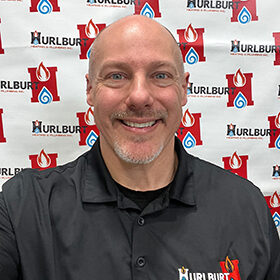According to the EPA, the air inside your home may be up to five times more polluted than the air outside. So when you’re doing the annual clean-sweep, don’t forget to add it to your list. If you have questions on how to improve the air quality in your home, call Hurlburt.
Spring clean your air
Spring sprucing can have your home looking great in no time. But what about the mess you can’t see? Invisible particles, like bacteria, chemicals, pet dander, and viruses—along with dust, mold, and mildew—can pollute your indoor air, affecting your home, health, and comfort. And since most people spend 90% of their time indoors, keeping the air clean is just as important as cleaning the surfaces you can see. Here’s a spring sprucing checklist that will help keep things tidy while helping to improve indoor air quality (IAQ): (cut down pollutants and combat poor indoor air quality).
Ban the use of chemicals in your home
Scented fragrances—like laundry detergents, floor cleaners, and air fresheners —may smell fresh, but chances are, they’re polluting your indoor air. These products can emit dozens of different chemicals into the air, causing respiratory irritation. To combat synthetic fragrances, purchase naturally scented or fragrant-free products, use mild cleaners without artificial ingredients, and discontinue the use of aerosol sprays. Use sliced lemons and baking soda to get a clean scent in the kitchen.
Place a floor mat at every door
Chemicals from dirt, pesticides, and other pollutants enter the home on the soles of shoes. A doormat will reduce the amount of pollutants tracked inside and help to keep IAQ levels in check. If possible, have family members leave their shoes at the door, too.
Keep everything clean underfoot
Use a vacuum with a HEPA filter to suck up pollutants that can accumulate in your carpets, like pollen, pet dander, dust mites, and PBDEs (brominated fire-retardant chemicals). Vacuum high-traffic areas several times. Next, mop every surface that can’t be vacuumed to pick up any lingering dust or allergens. Be sure to use an eco-friendly cleaning solution.
Add plants to the mix
Houseplants help to beautify a room while naturally filtering pollutants from the air. NASA research shows that foliage and roots work in tandem to absorb chemical pollutants released by synthetic materials. Recommended: aloe vera, ferns, or spider plants.
Change your filter often
If you haven’t already, upgrade your furnace filter to a HEPA (High Energy Particulate Air) air filter, and change it regularly. HEPA filters capture a minimum of 99.97% of pollutants at 0.3 microns, helping you to breathe a little easier at home.
Keep humidity levels in balance
Excess levels of moisture in the home help dust mites and mold thrive. Keeping humidity around 30%-50% can help keep them—and other allergens—under control. A dehumidifier helps to reduce moisture in indoor air while reducing the indoor pollen count, helping to keep symptoms at bay. Using exhaust fans and cracking windows, venting the clothes dryer to the outside, fixing leaky plumbing, and emptying HVAC drip pans can also help to balance moisture levels inside your home.
Don’t forget the ducts
If you have a forced air heating system, have the air ducts cleaned and sealed internally. This process can result in more even temperatures and lower utility bills. Make sure the contractor is a member of the National Air Duct Cleaners Association.
Purify your air
Installing a whole-home air filtration system, like the Lennox PureAir™ air purification system, is your best defense against poor indoor air quality. The PureAir system uses exclusive UVA-light technology to attack all three classes of indoor air contaminants–particles, mold/mildew/bacteria, and odors/chemical vapors. It also destroys ozone, an irritant known to be harmful to the lungs.
